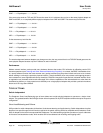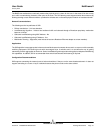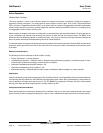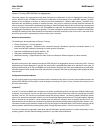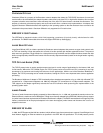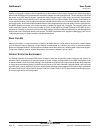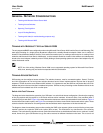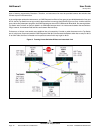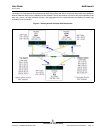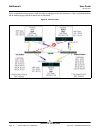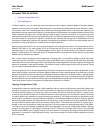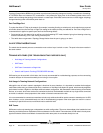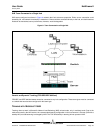
NetXtreme II User Guide
January 2010
Broadcom Corporation
Page 38 Teaming and Other Advanced Networking Properties Document ENGSRVT52-CDUM100-R
insertion of a tag into an Ethernet frame to identify the VLAN to which a frame belongs. If present, the 4-byte VLAN tag is
inserted into the Ethernet frame between the source MAC address and the length/type field. The first 2-bytes of the VLAN
tag consist of the IEEE 802.1Q tag type, whereas the second 2 bytes include a user priority field and the VLAN identifier
(VID). Virtual LANs (VLANs) allow the user to split the physical LAN into logical subparts. Each defined VLAN behaves as
its own separate network, with its traffic and broadcasts isolated from the others, thus increasing bandwidth efficiency within
each logical group. VLANs also enable the administrator to enforce appropriate security and quality of service (QoS) policies.
The BASP supports the creation of 64 VLANs per team or adapter: 63 tagged and 1 untagged. The operating system and
system resources, however, limit the actual number of VLANs. VLAN support is provided according to IEEE 802.1Q and is
supported in a teaming environment as well as on a single adapter. Note that VLANs are supported only with homogeneous
teaming and not in a multivendor teaming environment. The BASP intermediate driver supports VLAN tagging. One or more
VLANs may be bound to a single instance of the intermediate driver.
WAKE ON LAN
Wake on LAN (WOL) is a feature that allows a system to be awakened from a sleep state by the arrival of a specific packet
over the Ethernet interface. Because a Virtual Adapter is implemented as a software only device, it lacks the hardware
features to implement Wake on LAN and cannot be enabled to wake the system from a sleeping state via the Virtual Adapter.
The physical adapters, however, support this property, even when the adapter is part of a team.
PREBOOT EXECUTION ENVIRONMENT
The Preboot Execution Environment (PXE) allows a system to boot from an operating system image over the network. By
definition, PXE is invoked before an operating system is loaded, so there is no opportunity for the BASP intermediate driver
to load and enable a team. As a result, teaming is not supported as a PXE client, though a physical adapter that participates
in a team when the operating system is loaded may be used as a PXE client. Whereas a teamed adapter cannot be used
as a PXE client, it can be used for a PXE server, which provides operating system images to PXE clients using a combination
of Dynamic Host Control Protocol (DHCP) and the Trivial File Transfer Protocol (TFTP). Both of these protocols operate over
IP and are supported by all teaming modes.



